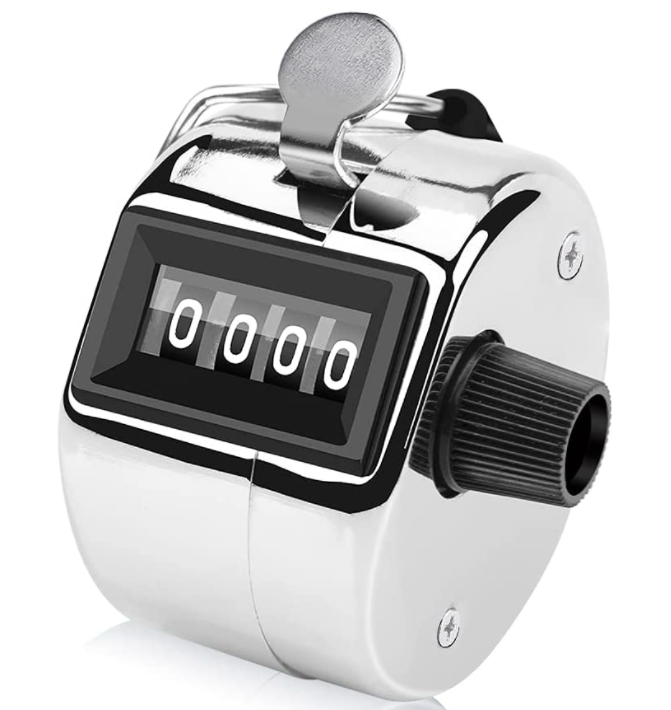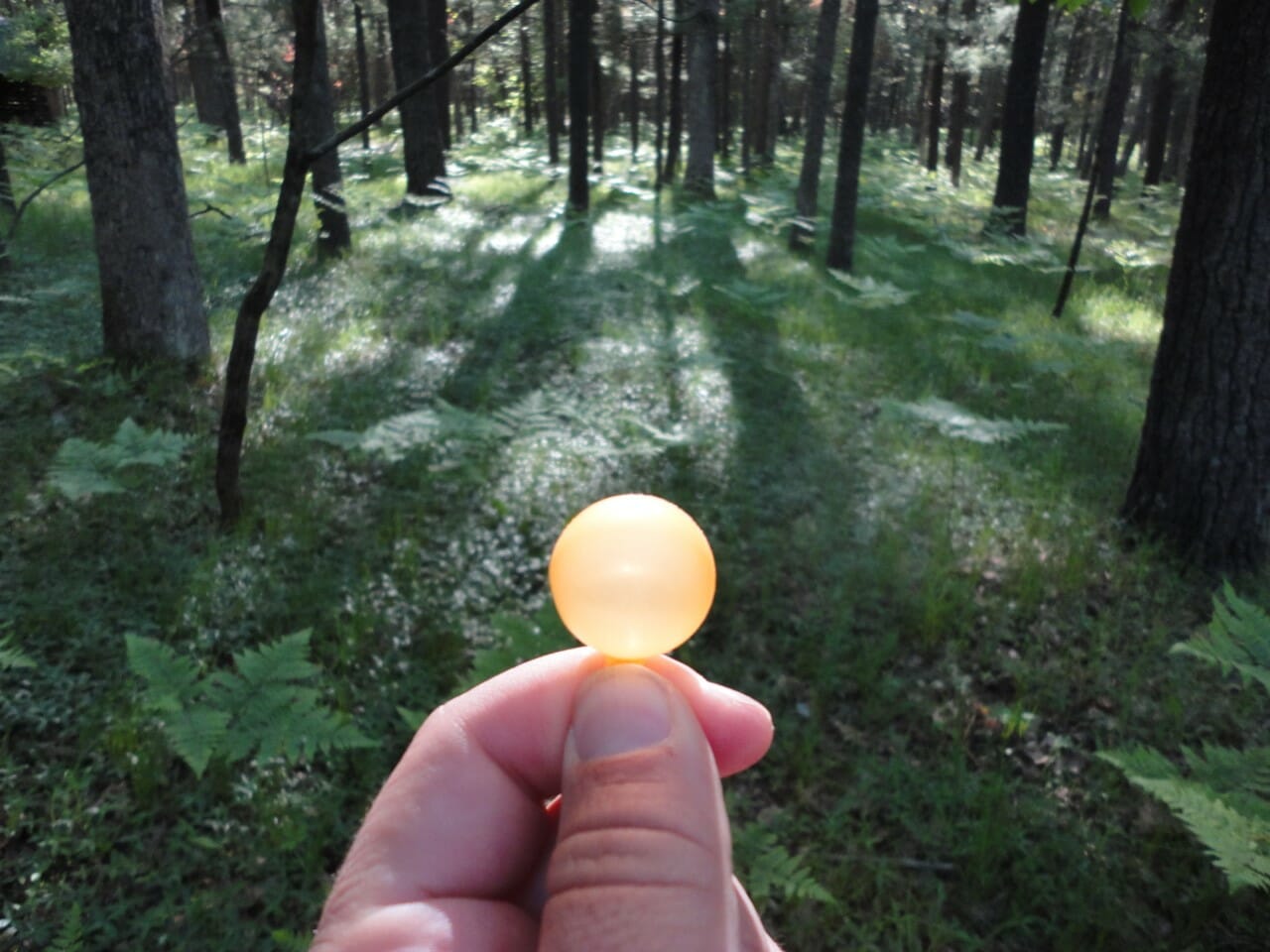If we don’t at least talk about how anglers pressure fisheries, is habitat work just window dressing?
Numbers. That’s the word that pops to mind when I see this image. I asked you all what you thought yesterday. Many said “bobber.” (OK. I think most of can agree that “strike indicator” is a bit over-cooked). Some suggested it’s the key to angling “success,” while some thought it’s a crutch, and others just shrugged or rolled their eyes.
I think “numbers”—and by that, I really mean numbers of fish caught—because that’s the topic we need to talk about when many rivers throughout the country feel the stresses of higher temperatures, and increased pressure at the same time. It’s a perfect storm. We should place a little more emphasis on “how,” and a lot less on “how many” these days.
Strike indicators and weighted nymph rigs changed fly fishing, because they made it possible for a “never-ever” person on a guide trip to experience the thrill of catching trout. I can’t fault that. In the hands of a capable DIY angler, the bobber can lead to more catches. And I cannot fault that either, because like most other anglers, the difference between an “epic” day and a “just OK” day has, for me, since I was a little boy, often boiled down to how many fish I caught. I’d like to tell you how much I love communing with nature, watching birds, feeling the currents swirl around my legs (all of which is true)… but yeah, when I’m fishing, getting skunked, well, stinks.
That said, the numbers-based madness of catching as many trout as possible, no matter what, is a huge issue.
I just had dinner with a great friend who is an outfitter (I’m going to leave him nameless to protect him from online trolls) and he related a story about a client who sent him a nastygram complaining that a recent guide day wasn’t up to expectations. The client said: “This is an entertainment expense and I didn’t get what I wanted.”
This, despite the fact that he and his buddy had landed 30 fish before lunch. What’s more, the guy carried a baseball-pitch-count clicker to track every fish he landed. To his credit, my outfitter friend replied to “clicker man” that, next time, he should just take his money to Applebee’s and go bowling or something to be “entertained.”
I just find all that profoundly warped and sad. So many people fish for so many other reasons—to clear their minds, to find inner peace, to appreciate nature, to be part of a community who finds all this sacred.

The hard science and anecdotal evidence all point in the same direction. Fish populations are way down on many of the most popular trout rivers, East and West. You can blame that on lower, warmer waters, and you’d be right. You can blame it on fungus-mungus, or whatever, and that may be right also. You can say we need to do more to provide trout with cold, clean water, and that’s an absolute truth. But we must stop overlooking the fact that there are now thousands of more anglers, every year, floating and fishing certain rivers, and pounding the living you-know-what out of the fish.
And catch-and-release is not a cure-all.
Sure, your favorite river might have produced 50 fish in a day 20 years ago. And if you experienced that, great, count yourself lucky and store it in the memory bank. But now, if the benchmark for “success” is landing 30 fish or more, that’s not fair. It’s not fair to guides who feel the pressure to produce. It’s really not fair to the DIY anglers who fish for reasons that transcend “entertainment.” It isn’t fair to the state agencies and other organizations like TU who pour millions of dollars and hundreds of thousands of volunteer hours into making river habitat healthier and more productive. And it sure as hell isn’t fair to the fish.
“Seek-and-destroy” attitudes among anglers yield exactly that… destruction.
There is a way out of this.
There are actually many ways out of this. We can close rivers to fishing, which is already happening. That’s not good—people depend on our rivers and fly fishing to make a living and feed their families. In Montana alone, it’s a $500 million economic driver every year. We can work toward more in-stream flows, of course. Then again, we can just pray for a natural miracle.
If the benchmark for “success” is landing 30 fish or more, that’s not fair. It’s not fair to guides who feel the pressure to produce. It’s really not fair to the DIY anglers who fish for reasons that transcend “entertainment.” It isn’t fair to the state agencies and other organizations like TU who pour millions of dollars and hundreds of thousands of volunteer hours into making river habitat healthier and more productive. And it sure as hell isn’t fair to the fish.
But we can also control our own destinies, collectively play the long game, and embrace a “less is more” approach, at least for the time being.
I’m all about the “technique slam” these days. I have nothing against the bobber. Go ahead, and catch a few that way. Then switch and try to catch a fish or two on a streamer. And if you pull that off, go hunt heads with dry flies. Switch the order, depending on what you see around you. Try the dry-dropper. Swing wet flies or soft-hackles. Do it all, in the same day. You will likely catch fewer fish. That’s the point. But you will get better.
Guides, if you have the chops to get your sport to hook trout on dries, streamers and nymphs in the same day, you have legit teaching talent and you’ve given your client more value than they bargained for, whether they know and appreciate that or not.
And any angler who endeavors to accept this challenge is going to up their own game. More importantly, you’re going to up the game—or at least keep it viable—and make a positive ethical mark on the sport that lasts for years… hopefully generations.
There are only so many cookies in the cookie jar. Just do the math. And please fish accordingly.



